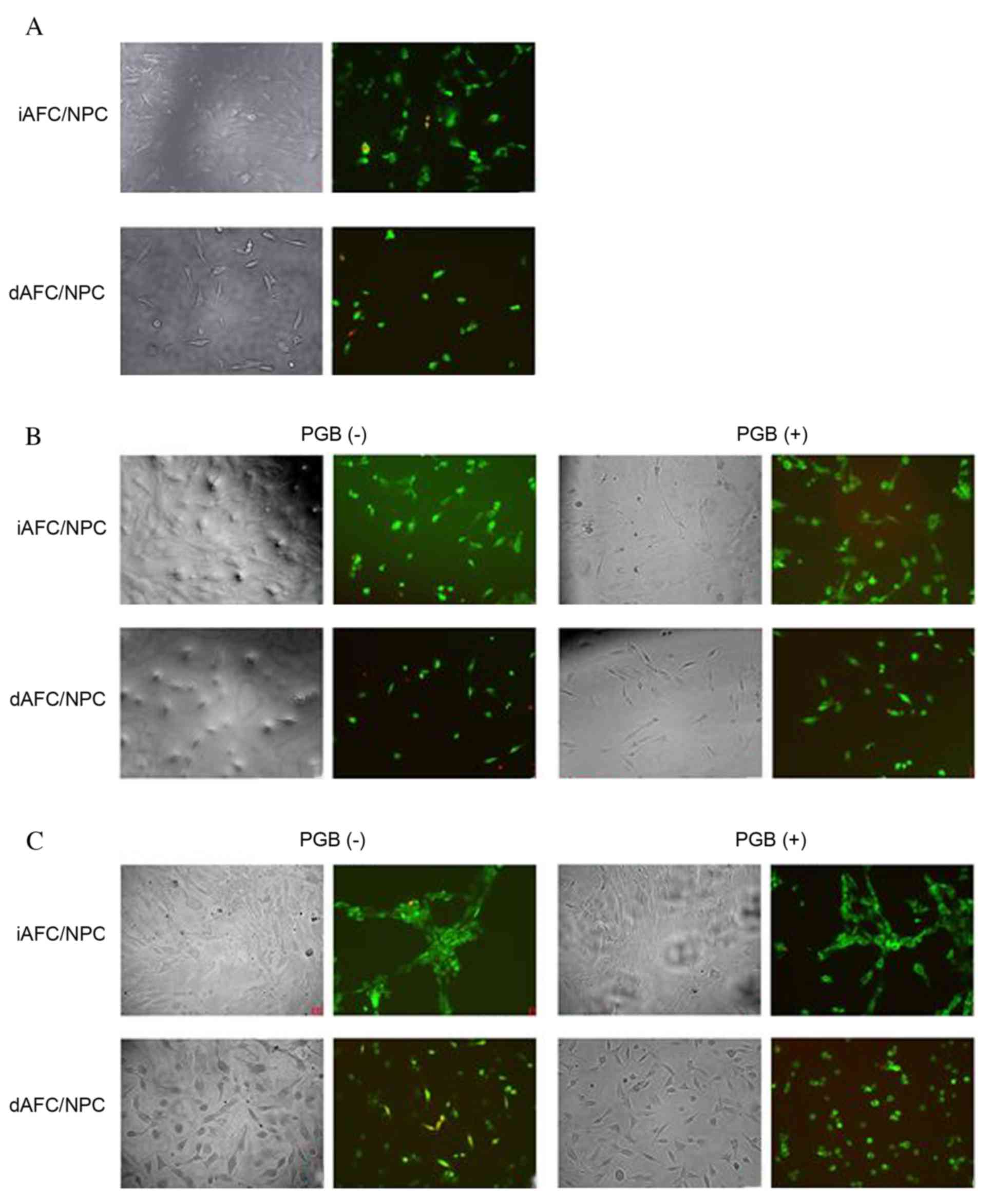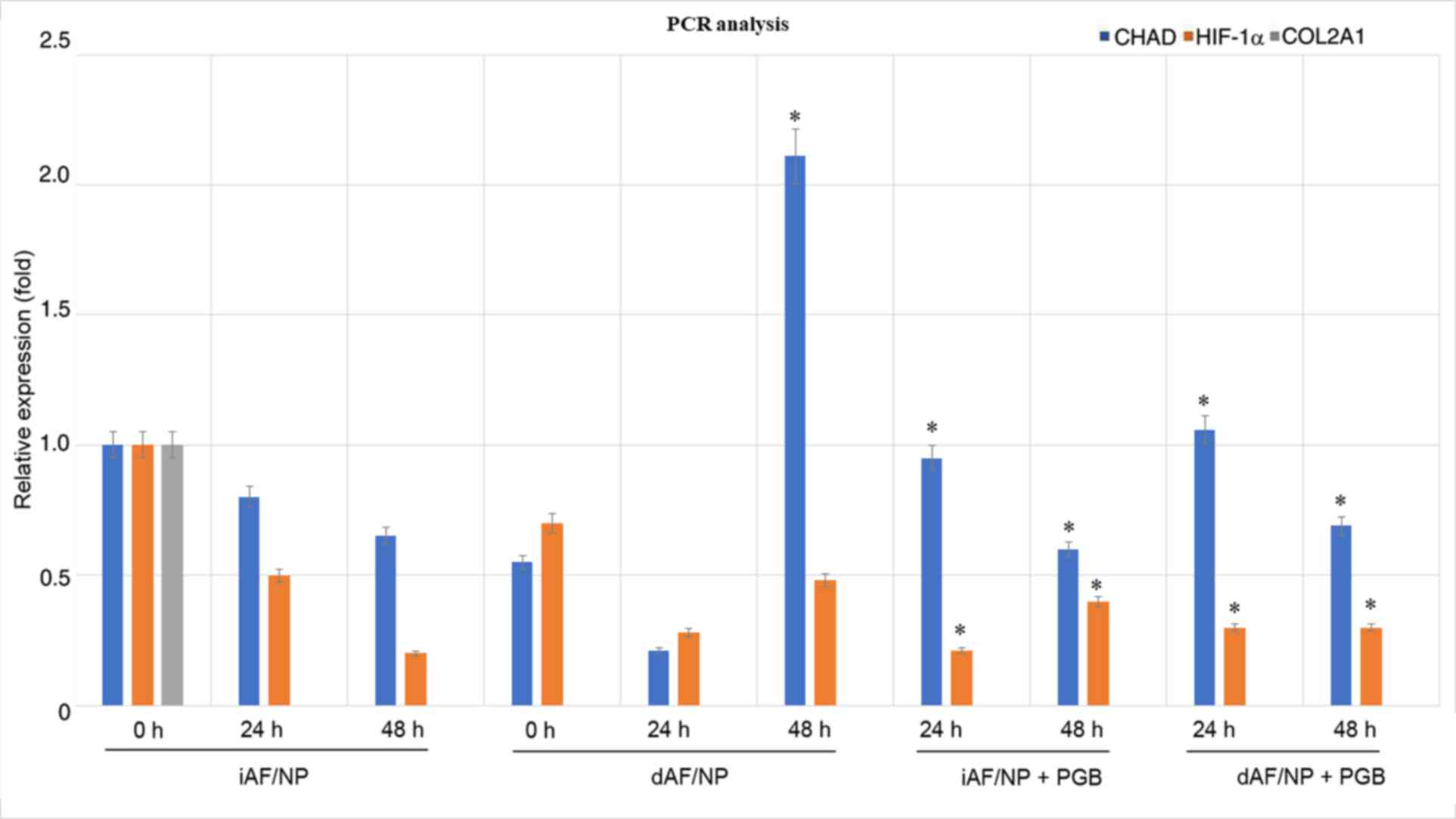|
1
|
Goodman CW and Brett AS: Gabapentin and
pregabalin for pain-is increased prescribing a cause for concern? N
Engl J Med. 377:411–414. 2017. View Article : Google Scholar : PubMed/NCBI
|
|
2
|
Bian F, Li Z, Offord J, Davis MD,
McCormick J, Taylor CP and Walker LC: Calcium channel alpha2-delta
type 1 subunit is the major binding protein for pregabalin in
neocortex, hippocampus, amygdala, and spinal cord: An ex vivo
autoradiographic study in alpha2-delta type 1 genetically modified
mice. Brain Res. 1075:68–80. 2006. View Article : Google Scholar : PubMed/NCBI
|
|
3
|
Blommel ML and Blommel AL: Pregabalin: An
antiepileptic agent useful for neuropathic pain. Am J Health Syst
Pharm. 64:1475–1482. 2007. View Article : Google Scholar : PubMed/NCBI
|
|
4
|
Zarei M, Najafi A, Mansouri P,
Sadeghi-Yazdankhah S, Saberi H, Moradi M and Farzan M: Management
of postoperative pain after lumbar surgery-pregabalin for one day
and 14 days-a randomized, triple-blinded, placebo-controlled study.
Clin Neurol Neurosurg. 151:37–42. 2016. View Article : Google Scholar : PubMed/NCBI
|
|
5
|
Roth T, Arnold LM, Garcia-Borreguero D,
Resnick M and Clair AG: A review of the effects of pregabalin on
sleep disturbance across multiple clinical conditions. Sleep Med
Rev. 18:261–271. 2014. View Article : Google Scholar : PubMed/NCBI
|
|
6
|
Foroutan N and Nikvarz N: Role of
pregabalin in management of pruritus: A literature review. J Pharm
Pharm Sci. 19:465–474. 2016. View
Article : Google Scholar : PubMed/NCBI
|
|
7
|
Gazulla J, Ruiz-Gazulla C and Tintore M:
GABAergic pharmacotherapy in the treatment of motor disorders of
the central nervous system. Curr Pharm Des. 21:4989–4995. 2015.
View Article : Google Scholar : PubMed/NCBI
|
|
8
|
Akyuva Y, Karaarslan N, Yilmaz I, Ozbek H,
Sirin DY, Gurbuz MS, Kaya YE, Kaplan N and Ates O: How scaffolds,
which are polymeric drug delivery systems allowing controlled
release, can be tested in human primary nucleus pulposus and
annulus fibrosus cell cultures? Merit Res J Med Med Sci. 5:477–487.
2017.
|
|
9
|
Karaarslan N, Yilmaz I, Ozbek H, Yasar
Sirin D, Kaplan N, Akyuva Y, Gonultas A and Ates O: Are specific
gene expressions of extracellular matrix and nucleus pulposus
affected by primary cell cultures prepared from intact or
degenerative intervertebral disc tissue? Turk Neurosurg. Jan
22–2018.(Epub ahead of print). View Article : Google Scholar
|
|
10
|
Komur B, Akyuva Y, Karaslan N, Isyar M,
Gumustas SA, Yilmaz I, Akkaya S, Sirin DY, Mutlu CA, Batmaz AG, et
al: Can a biodegradable implanted bilayered drug delivery system
loaded with BMP-2/BMP-12 take an effective role in the biological
repair process of bone-tendon injuries? A preliminary report. J
Pharm (Cairo). 2017:74578652017.PubMed/NCBI
|
|
11
|
Oznam K, Sirin DY, Yilmaz I, Kaya YE,
Isyar M, Gumustas SA, Ozbek H, Akkaya S, Kayhan A and Mahirogullari
M: Iopromide- and gadopentetic acid-derived preparates used in MR
arthrography may be harmful to chondrocytes. J Orthop Surg Res.
12:982017. View Article : Google Scholar : PubMed/NCBI
|
|
12
|
Gumustas F, Yilmaz I, Sirin DY, Gumustas
SA, Batmaz AG, Isyar M, Akkaya S and Mahirogullari M: Chondrocyte
proliferation, viability and differentiation is declined following
administration of methylphenidate utilized for the treatment of
attention-deficit/hyperactivity disorder. Hum Exp Toxicol.
36:981–992. 2017. View Article : Google Scholar : PubMed/NCBI
|
|
13
|
Rosenzweig DH, Gravel Tremblay J, Bisson
D, Ouellet JA, Weber MH and Haglund L: Comparative analysis in
continuous expansion of bovine and human primary nucleus
pulposuscells for tissue repair applications. Eur Cell Mater.
33:240–251. 2017. View Article : Google Scholar : PubMed/NCBI
|
|
14
|
Ehlicke F, Freimark D, Heil B, Dorresteijn
A and Czermak P: Intervertebral disc regeneration: Influence of
growth factors on differentiation of human mesenchymal stem cells
(hMSC). Int J Artif Organs. 33:244–252. 2010. View Article : Google Scholar : PubMed/NCBI
|
|
15
|
Zhou X, Tao Y, Liang C, Zhang Y, Li H and
Chen Q: BMP3 alone and together with TGF-β promote the
differentiation of human mesenchymal stem cells into a nucleus
pulposus-like phenotype. Int J Mol Sci. 16:20344–20359. 2015.
View Article : Google Scholar : PubMed/NCBI
|
|
16
|
Feng G, Jin X, Hu J, Ma H, Gupte MJ, Liu H
and Ma PX: Effects of hypoxias and scaffold architecture on rabbit
mesenchymal stem cell differentiation towards a nucleus
pulposus-like phenotype. Biomaterials. 32:8182–8189. 2011.
View Article : Google Scholar : PubMed/NCBI
|
|
17
|
Li XC, Wu YH, Bai XD, Ji W, Guo ZM, Wang
CF, He Q and Ruan DK: BMP7-Based functionalized self-assembling
peptides protect nucleus pulposus-derived stem cells from apoptosis
ın vitro. Tissue Eng Part A. 22:1218–1228. 2016. View Article : Google Scholar : PubMed/NCBI
|
|
18
|
Emanuel KS, Vergroesen PP, Peeters M,
Holewijn RM, Kingma I and Smit TH: Poroelastic behaviour of the
degenerating human intervertebral disc: A ten-day study in a loaded
disc culture system. Eur Cell Mater. 29:330–340. 2015. View Article : Google Scholar : PubMed/NCBI
|
|
19
|
Risbud MV and Shapiro IM: Notochordal
cells in the adult intervertebral disc: New perspective on an old
question. Crit Rev Eukaryot Gene Expr. 21:29–41. 2011. View Article : Google Scholar : PubMed/NCBI
|
|
20
|
Van den Akker GG, Surtel DA, Cremers A,
Rodrigues-Pinto R, Richardson SM, Hoyland JA, van Rhijn LW, Welting
TJ and Voncken JW: Novel immortal human cell lines reveal
subpopulations in the nucleus pulposus. Arthritis Res Ther.
16:R1352014. View
Article : Google Scholar : PubMed/NCBI
|
|
21
|
Imabuchi R, Ohmiya Y, Kwon HJ, Onodera S,
Kitamura N, Kurokawa T, Gong JP and Yasuda K: Gene expression
profile of the cartilage tissue spontaneously regenerated in vivo
by using a novel double-network gel: Comparisons with the normal
articular cartilage. BMC Musculoskelet Disord. 12:2132011.
View Article : Google Scholar : PubMed/NCBI
|
|
22
|
Zeng Y, Danielson KG, Albert TJ, Shapiro
IM and Risbud MV: HIF-1 alpha is a regulator of galectin-3
expression in the intervertebral disc. J Bone Miner Res.
22:1851–1861. 2007. View Article : Google Scholar : PubMed/NCBI
|
|
23
|
Risbud MV, Schipani E and Shapiro IM:
Hypoxic regulation of nucleus pulposus cell survival: From niche to
notch. Am J Pathol. 176:1577–1583. 2010. View Article : Google Scholar : PubMed/NCBI
|
|
24
|
Hanley EN Jr and McCulloch JA: Surgical
indication and techniques international society for the study of
the lumbar spine: The lumbar spinethe lumbar spine 2nd edition. WB
Saunders; Philadelphia, PA: pp. 492–524. 1996
|
|
25
|
Livak KJ and Schmittgen TD: Analysis of
relative gene expression data using real-time quantitative PCR and
the 2(-Delta Delta C(T)) method. Methods. 25:402–408. 2001.
View Article : Google Scholar : PubMed/NCBI
|
|
26
|
Taylor CP, Angelotti T and Fauman E:
Pharmacology And mechanism of action of pregabalin: The calcium
channel alpha2-delta (alpha2-delta) subunit as a target for
antiepileptic drug discovery. Epilepsy Res. 73:137–150. 2007.
View Article : Google Scholar : PubMed/NCBI
|
|
27
|
Salat K, Librowski T, Nawiesniak B and
Gluch-Lutwin M: Evaluation of analgesic, antioxidant, cytotoxic and
metabolic effects of pregabalin for the use in neuropathic pain.
Neurol Res. 35:948–958. 2013. View Article : Google Scholar : PubMed/NCBI
|
|
28
|
Kim JS, Ahmadinia K, Li X, Hamilton JL,
Andrews S, Haralampus CA, Xiao G, Sohn HM, You JW, Seo YS, et al:
Development of an experimental animal model for lower back pain by
percutaneous injury-induced lumbar facet joint osteoarthritis. J
Cell Physiol. 230:2837–2847. 2015. View Article : Google Scholar : PubMed/NCBI
|
|
29
|
Jang Y, Song HK, Yeom MY and Jeong DC: The
immunomodulatory effect of pregabalin on spleen cells in
neuropathic mice. Anesth Analg. 115:830–836. 2012. View Article : Google Scholar : PubMed/NCBI
|
|
30
|
Kalaf Growney EA, Flores R, Bledsoe JG and
Sell SA: Characterization of slow-gelling alginate hydrogels for
intervertebral disc tissue-engineering applications. Mater Sci Eng
C Mater Biol Appl. 63:198–210. 2016. View Article : Google Scholar : PubMed/NCBI
|
|
31
|
Liu MC, Chen WH, Wu LC, Hsu WC, Lo WC, Yeh
SD, Wang MF, Zeng R and Deng WP: Establishment of a promising human
nucleus pulposus cell line for intervertebral disc tissue
engineering. Tissue Eng Part C Methods. 20:1–10. 2014. View Article : Google Scholar : PubMed/NCBI
|
|
32
|
Gumustas SA, Yilmaz I, Isyar M, Sirin DY,
Batmaz AG, Ugras AA, Oznam K, Ciftci Z and Mahirogullari M:
Assessing the negative impact of phenyl alkanoic acid derivative, a
frequently prescribed drug for the suppression of pain and
inflammation, on the differentiation and proliferation of
chondrocytes. J Orthop Surg Res. 11:702016. View Article : Google Scholar : PubMed/NCBI
|
|
33
|
Isyar M, Yilmaz I, Sirin Yasar D, Yalcin
S, Guler O and Mahirogullari M: A practical way to prepare primer
human chondrocyte culture. J Orthop. 13:162–167. 2016. View Article : Google Scholar : PubMed/NCBI
|
|
34
|
Guzelant AY, Isyar M, Yilmaz I, Sirin DY,
Cakmak S and Mahirogullari M: Are chondrocytes damaged when
rheumatologic inflammation is suppressed? Drug Chem Toxicol.
40:13–23. 2017. View Article : Google Scholar : PubMed/NCBI
|











